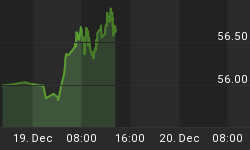The US dollar builds on its newly acquired robustness amid the FOMCs modest economic upgrade with regards to labour markets and the reiteration of the Feb 1st 2010 deadline as the expiry for the various liquidity operations. Although the FOMC statement maintained the phrase exceptionally low levels of the federal funds rate for an extended period, the overall tone was more than sufficient for the greenback to extend its upward trajectory, especially amid the rapid concentration of Eurozone-centric credit and banking problems cast a pall on the non-USD block.
Considering that the balance of recent US data has tipped in favour of the US (employment, retail sales and CPI), dollar bulls will content themselves with the slightest of modest of hawkish/ commentary from the Fed. Wednesdays FOMC statement was a simple step in the Feds challenging task of normalizing liquidity and credit markets amid an environment of rising yields and consolidating equities.
The combination of negative event flow in the Eurozone, year-end window dressing operations reducing USD shorts and a USD-favourable yield gap will prolong USD gains into mid Q1 2010, especially amid no prospects of a fast resolution in the Eurozone sovereign problems. Consequently, EURUSD hit the $1.4280 target issued at the Dec 10 HotChart after the pair exceeded the magnitude of its 2 prior down cycles. $1.41 should likely emerge as the next support level, but $1.38 appears to be a sturdier foundation.
USDJPY Eyes 93
It is time for JPY to take a temporary a break and allow the USD to draw most of the risk aversion plays at the next round of risk pullback. Two weeks after the Bank of Japan was pressured by the MoF to inject extra liquidity aimed at stabilizing yen strength, the central bank today altered its definition of price stability to include only positive price growth, instead of the previous definition of zero-2% annual growth. By announcing its intolerance for flat consumer price prices, the BoJ is set push against a resurgence in yen strength.

Accordingly, we would expect USDJPY to regain 92.50 until it encounters the next resistance at the 2 year trend line on the monthly chart below. Subsequent pressure point emerges at 95 before we could see a gradual turn in the pair near February. Were not yet abandoning our 5-year approach on the cyclical lows in USDJPY and so it is too early to call the bottom of USDJPY.
Sterling to Regain Whipping Boy Status in 2010
Just as liquidity withdrawal may become the buzzword of 2010, the UK economy and its currency could fall victim to an excessive reduction in stimulus. The Bank of England has already signalled its intentions to not add any more quantitative easing, the UK Treasury plans spending cuts, the VAT hike is levied in January, the scrappage incentives for used cars expires in February and the May General Elections promise to be a close race.
None of these developments are set to favour GBP or the UK economy which has yet to recover from recession. Sterling risks regaining its status as the whipping boy of FX in 2010 as these vital dosages of oxygen are removed from a still tepid economy. The 200-day MA of $1.60 is the next target for the bears over the short term, while $1.55 is seen as the next medium term average for GBPUSD after the $1.70 figure continues to hold above the monthly closes since October 2008.
















